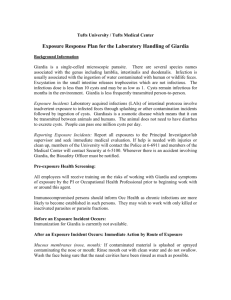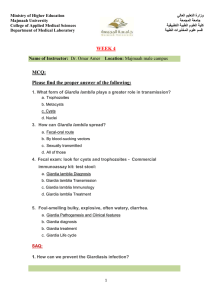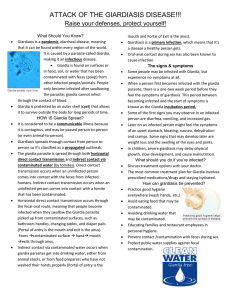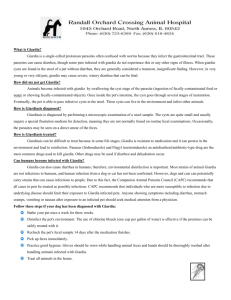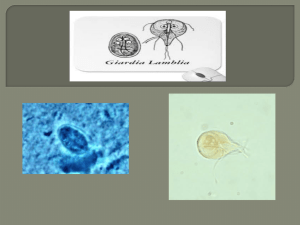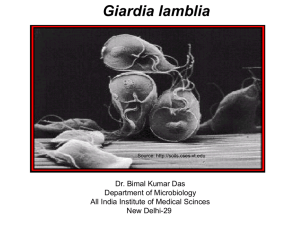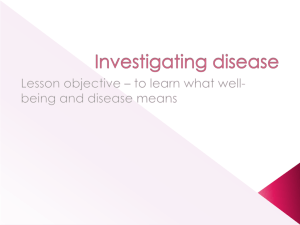Giardia
advertisement
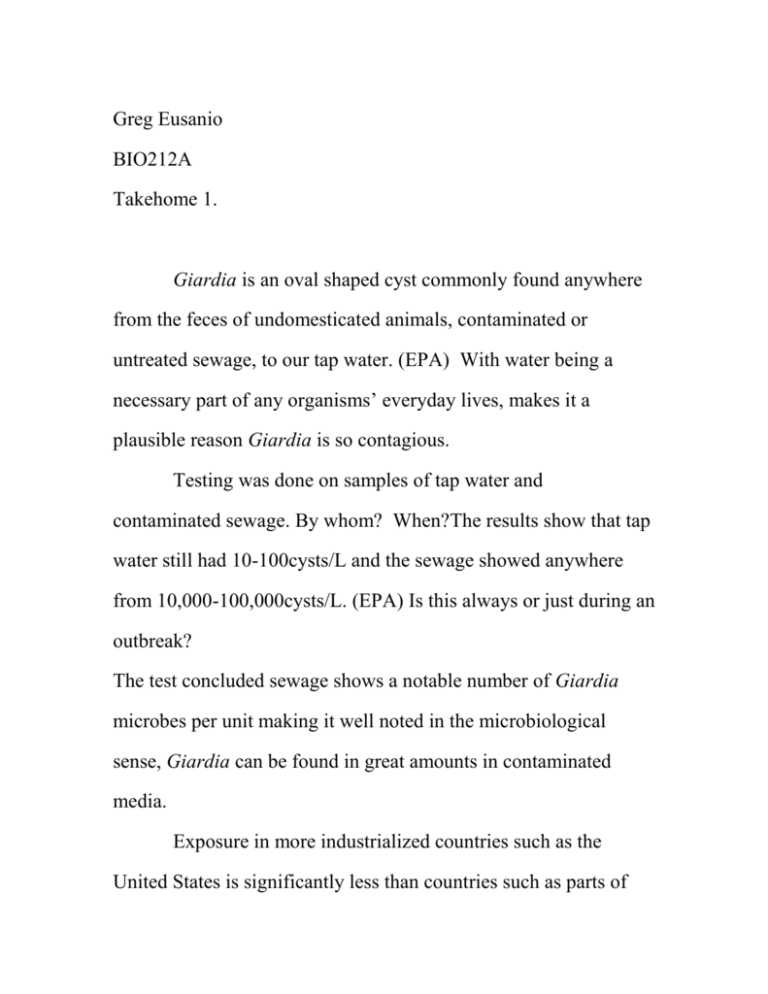
Greg Eusanio BIO212A Takehome 1. Giardia is an oval shaped cyst commonly found anywhere from the feces of undomesticated animals, contaminated or untreated sewage, to our tap water. (EPA) With water being a necessary part of any organisms’ everyday lives, makes it a plausible reason Giardia is so contagious. Testing was done on samples of tap water and contaminated sewage. By whom? When?The results show that tap water still had 10-100cysts/L and the sewage showed anywhere from 10,000-100,000cysts/L. (EPA) Is this always or just during an outbreak? The test concluded sewage shows a notable number of Giardia microbes per unit making it well noted in the microbiological sense, Giardia can be found in great amounts in contaminated media. Exposure in more industrialized countries such as the United States is significantly less than countries such as parts of Africa due to the lack of water treatments. This doesn’t mean we’re in the clear because it was reported in 2000 that 4,600 people were hospitalized in the United States with most being children under 5 years of age. (EPA) Toddlers are affected more because they are well known to touch everything around and with Giardia being contagious and tough, making it a recipe for disaster. The cysts are most often transferred through touch and that is more than enough for the microbe to reek havoc. Since 1971, Giardia has been the most commonly identified pathogen in waterborne outbreaks reported in the United States. (EPA) We must gain awareness of the power this microbe can unveil if we happen to do gain exposure from containments or another living organism. Some symptoms of exposure include significant weight loss, abdominal pain, vomiting, and or pale or greasy appearing stool. (EPA) Symptoms can gain anywhere from a few days to months or years. Luckily there’re prescription treatments to cure symptoms but normal side effects should be considered. The best piece of advice to avoid exposure to Giardia alone is ensuring your water system at home is safe to drink. (EPA) If wells are the source of your water, make sure the water is boiled prior to consuming because unlike endospores, Giardia cannot survive at extreme temperatures. Giardia is quite contagious, therefore making it a successful microbe. Like other pathogens, exposure can be impeded and controlled by knowing what is in your environment and being able to react properly if the time of contamination does come. EPA. Giardia: Drinking Water Fact Sheet. September 2000. 11 September 2013. http://water.epa.gov/action/advisories/drinking/upload/2009_02_03 _criteria_humanhealth_microbial_giardiafs.pdf
